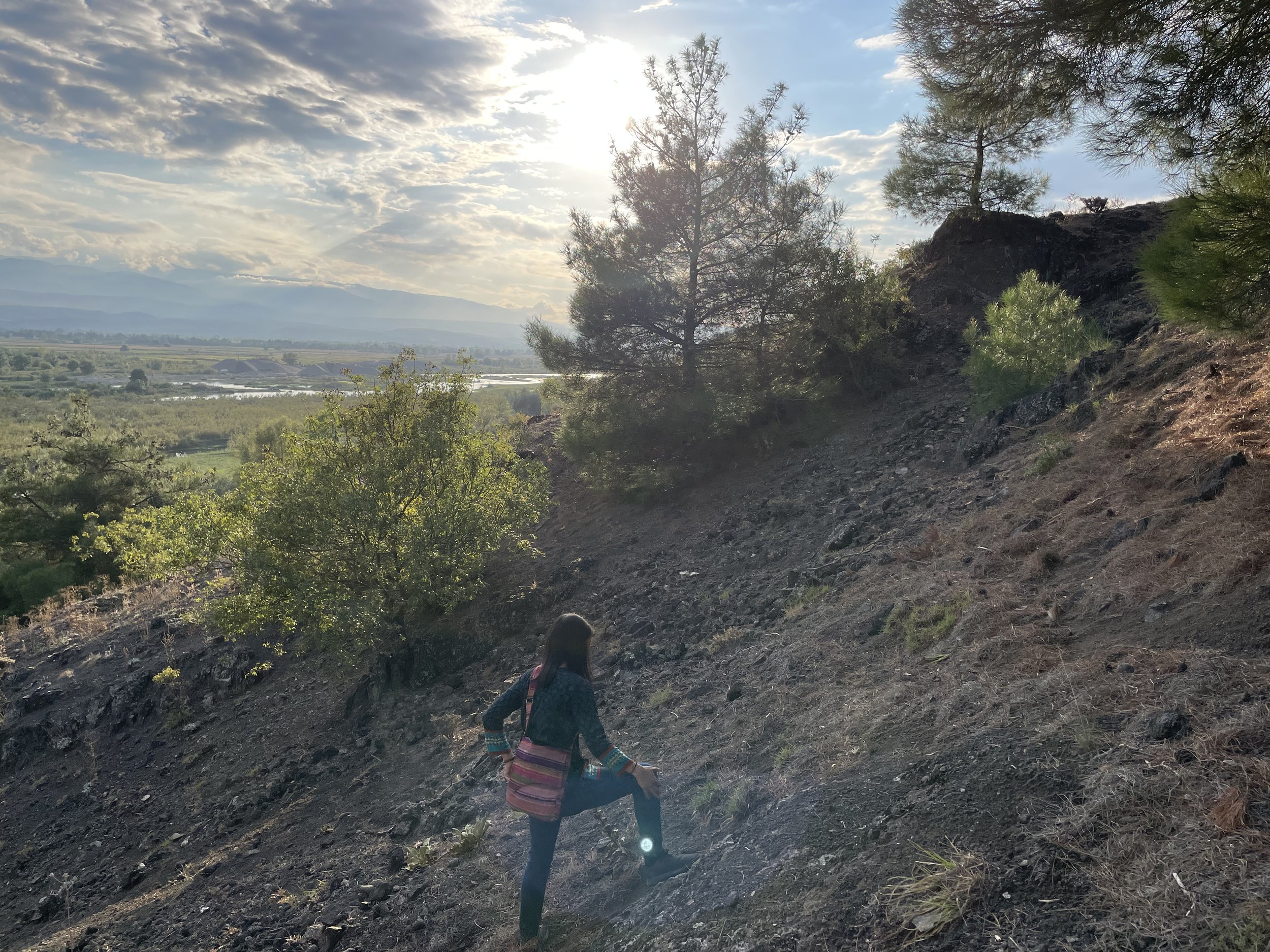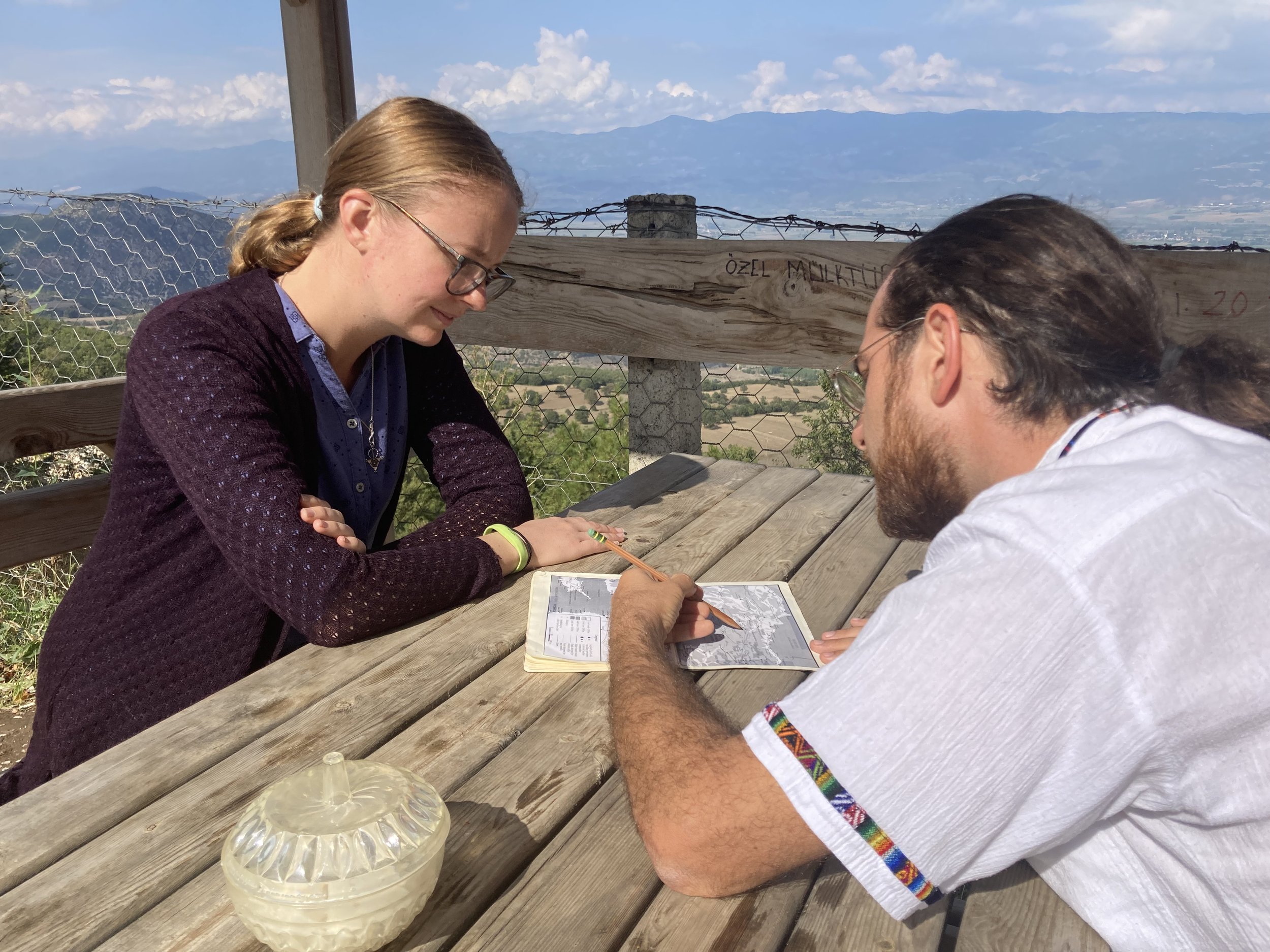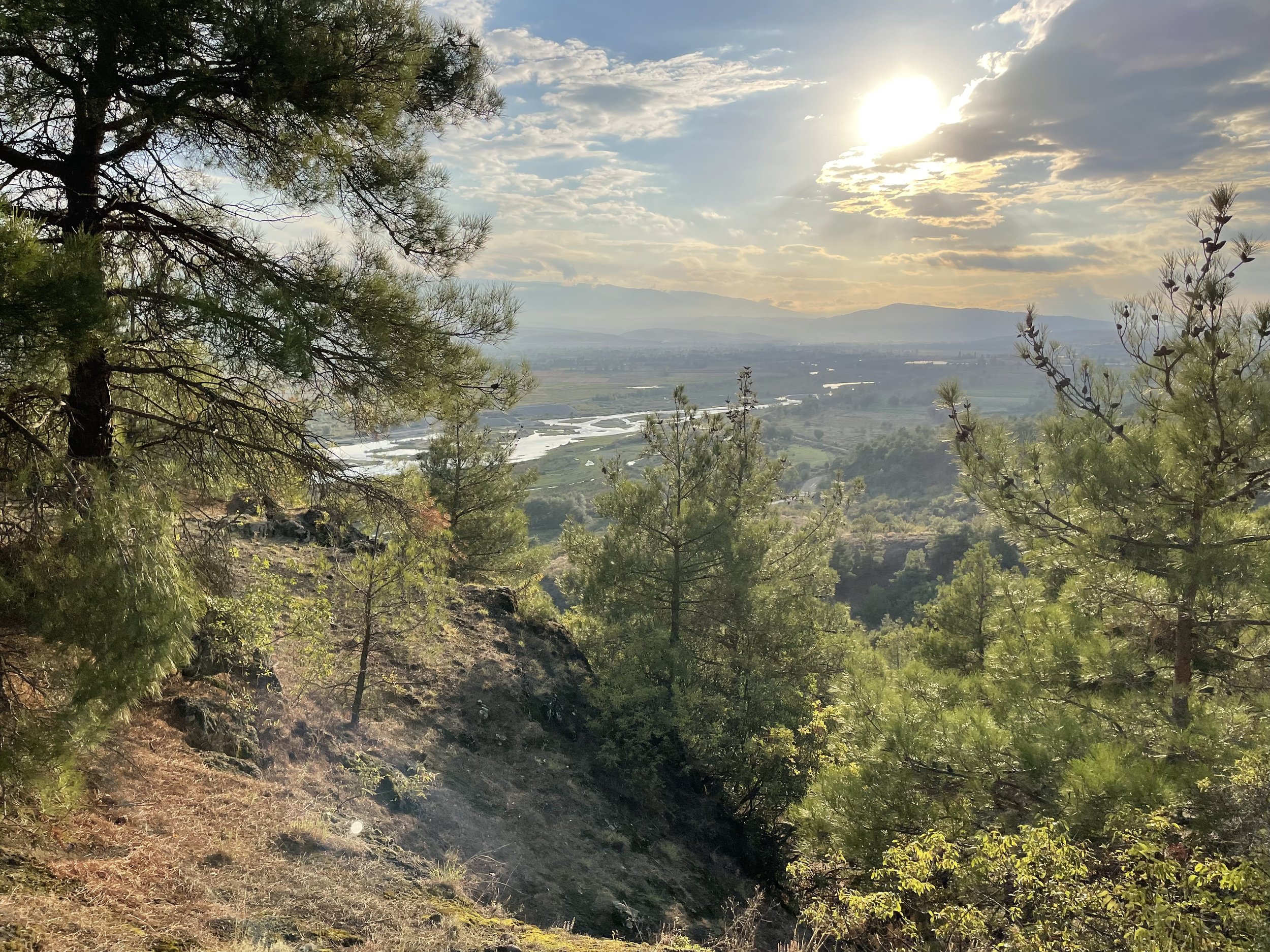The Quest, Part One
22 October 2022
Macrina lived at the family villa in Annisa, but several of her brothers spent time at a monastic retreat that they built near the Iris River. My favourite Macrina scholar, Anna Silvas, searched for the spot and published an article about her findings. Çansu pulled a printed copy of this paper out of the trunk when we left the Church Place. He’d already underlined the relevant passages.
This ridge lies several kilometers northeast of the Church Place, the retreat presumably somewhere on this river-facing side.
The retreat was initially home to Macrina’s brother Naukratius, her first sibling to follow her lead in adopting an ascetic life. He freed his slave Chrysaphius, and the two of them prayed and hunted game for the poor. They lived there five years and died together in a fishing accident one spring.
The tragedy brought Basil back from his studies in Athens. According to their younger brother Gregory of Nyssa, Basil was “monstrously conceited,” but Macrina soon won him also to a life of simplicity, self-denial, prayer and service. Within a year or so, Basil had moved in to the river retreat. His friend Gregory of Nazianzus and his brother Gregory would eventually join him.
None of them lived there permanently—the communal monasticism Macrina was working out in the family villa would eventually become the norm, codified by Basil in his monastic rules. Still, the retreat was significant, and Çansu and I both wanted to find it.
Our first stop was a high-altitude view from a hill across the river. We scoured the opposite bank for places matching Silvas’ descriptions. Çansu suggested a spot near the shore while I thought we were looking for something higher up. We agreed on a strategic break for lunch before the search began in earnest. (The strategy was mostly to keep Becca happy—Çansu and I were in a state of excitement that lifted us above such mundane concerns.)
Though not ancient, we did find a very rustic hut in which to eat lunch…
…which consisted of fried walnut bread and tea
From the article, we gathered that we were looking for a path not far from the ruins of the ancient Roman bridge. It didn’t take me long to imagine I’d found one. We scrambled up the slope, Becca and I making liberal use of hands as well as feet.
The remains of the Roman bridge, one of the stanchions presumably tilted by an earthquake.
“The paper said Macrina’s mother could come this way with a mule,” Çansu pointed out.
I said that mules were more surefooted than us. (They are not more stubborn.)
“Even if they’re stronger, they need a path. It said a path with switchbacks.”
It was soon apparent even to me that we were on no such path, but we were already a good ways up the mountain. We forged ahead in hopes that a track might appear. Briefly it did. Then it vanished again among twisted conifers and gravel-slick slopes. But we were near the top of the ridge now, so we pressed on.
Becca steels herself for yet another ascent.
At the crest of the ridge, we found four things. First, our breath. Then three holes like the ones dug by looters at the Church Place, luring us toward the thought that something significant at least used to be here. This bittersweet illusion was quashed Çansu’s realization that the river curves around the ridge at two places, not one, and the bridge that Silvas describes in detail is not in fact made central to the location of the retreat. The second curve matched her descriptions better—we’d climbed the wrong mountain. As consolation, we saw the sun setting in splendor over Annisa. Then we had to climb down.
There was still light enough to see the black gravel that skidded underfoot, threatening to send us down the slope with rubber-soled skis.
Çansu kept to his feet all the way to the road. “We can come back tomorrow and try again,” he suggested brightly.
I instantly agreed. That night I wrote Anna Silvas to let her know that I’d followed her article like a treasure map. I almost died, but I had fun! (I may have left that last part unsaid.) Then Becca and I fell into the log-like slumber of those who scale pathless mountains.
To be continued…
Treasure maps and great aspirations.
The view toward Annisa in the westering sun.







